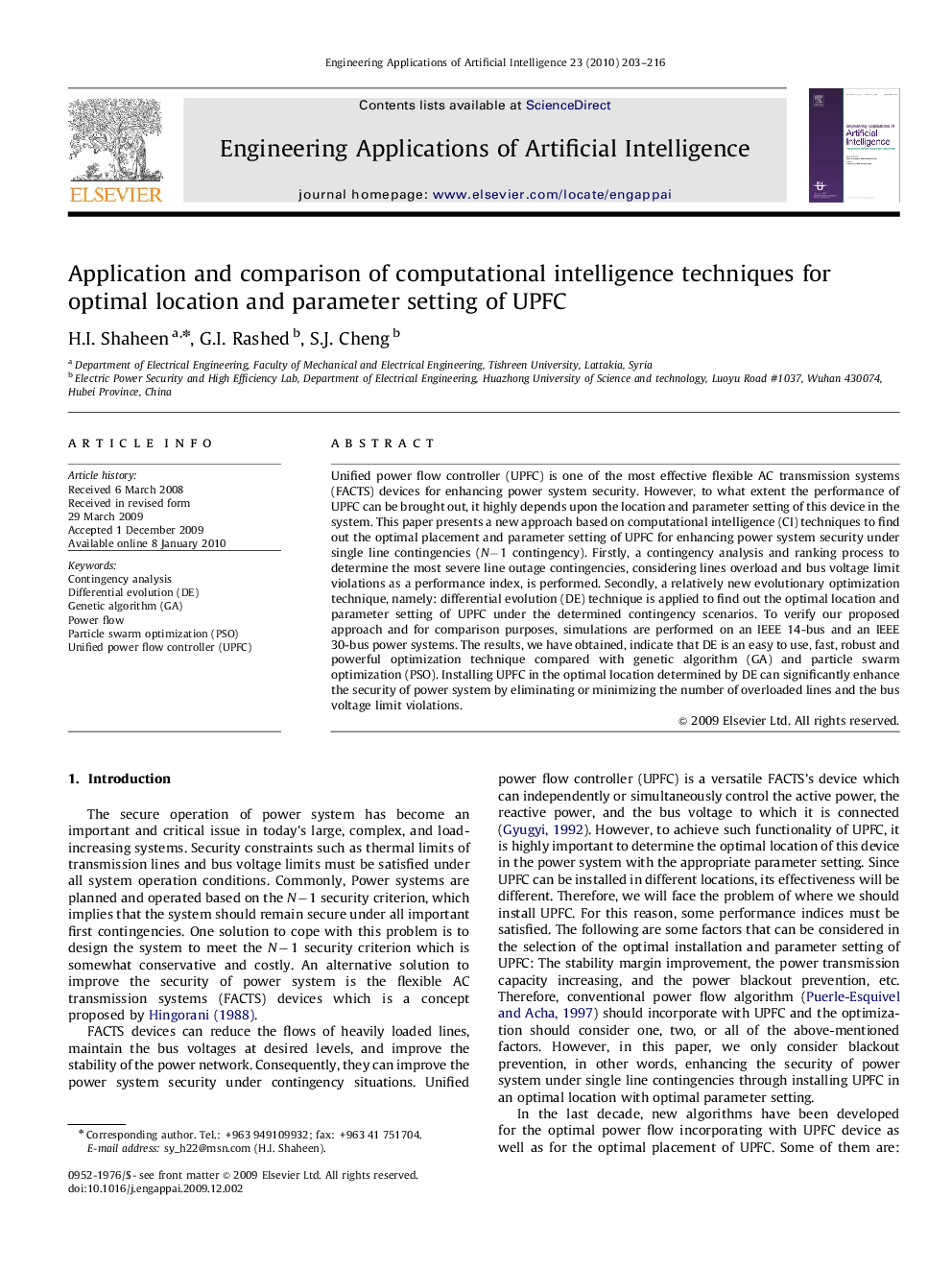| کد مقاله | کد نشریه | سال انتشار | مقاله انگلیسی | نسخه تمام متن |
|---|---|---|---|---|
| 381115 | 1437484 | 2010 | 14 صفحه PDF | دانلود رایگان |

Unified power flow controller (UPFC) is one of the most effective flexible AC transmission systems (FACTS) devices for enhancing power system security. However, to what extent the performance of UPFC can be brought out, it highly depends upon the location and parameter setting of this device in the system. This paper presents a new approach based on computational intelligence (CI) techniques to find out the optimal placement and parameter setting of UPFC for enhancing power system security under single line contingencies (N−1 contingency). Firstly, a contingency analysis and ranking process to determine the most severe line outage contingencies, considering lines overload and bus voltage limit violations as a performance index, is performed. Secondly, a relatively new evolutionary optimization technique, namely: differential evolution (DE) technique is applied to find out the optimal location and parameter setting of UPFC under the determined contingency scenarios. To verify our proposed approach and for comparison purposes, simulations are performed on an IEEE 14-bus and an IEEE 30-bus power systems. The results, we have obtained, indicate that DE is an easy to use, fast, robust and powerful optimization technique compared with genetic algorithm (GA) and particle swarm optimization (PSO). Installing UPFC in the optimal location determined by DE can significantly enhance the security of power system by eliminating or minimizing the number of overloaded lines and the bus voltage limit violations.
Journal: Engineering Applications of Artificial Intelligence - Volume 23, Issue 2, March 2010, Pages 203–216